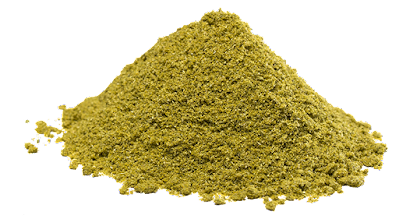How lupulin 'Cryo Hops' are changing the beer brewing industry
The concept of making beer hasn't changed much in several hundred years but the methods recently have. While hops have been used for many a year, one company in America might have found a way for a genuine step change in hop use with their innovation of collecting lupulin powder.
You might already know that lupulin is the part of the hops that brewers utilised to make beers hoppy as that's where the good alpha acids for brewing come from.
In case you didn't know, the alpha acids are converted into bitter iso-alpha acids during the brewing process, and essential oils and are what give beers their varying hoppy qualities.
YCH Hops, a grower-owned hop supplier based in Washington, America has created a new process where the lupulin is extracted from the hops and is collected in powder form and marketed as Cryo Hops.
You might well ask, what's the point of this?
Efficiency gains in making beer are the short answer.
Beer hops are often made into pellets form for distribution and preservation. The process of making the pellets actually breaks down the acids and oils meaning the effect on the beer requires more hops than one perhaps needs. Enter lupulin powder which has a superior percentage of 'herbs and spices' over hop pellets meaning that less quantity is required.
 |
| Ekuanot hops are quite popular |
YCH boasts that their product "offers twice the resin content of traditional whole-leaf and hop pellet products" which basically means you only need to use half as much.
YCH Hops initially started to market their powdered 'Cryo Hops' with the brand name "LupuLN2" to commercial brewers in America. The reviews are in and breweries switching as result.
How is lupulin powder made into cryo hops?
The powder extraction process is simple in concept. The collected hops are subjected to cold temperatures inside a nitrogen atmosphere. This limits any oxidation of the sensitive resins and oils in the hop. The hops are 'chilled and milled' and the lupulin is forced from the lupulin gland.
The little guy has not been forgotten though - a small home brewer, you can buy the powder from Amazon!
How to use Cryo Hops
It's dead simple - you can simply dry hop the Cryo hops as you would with your ordinary pellet hops. You don't even need to make a hop tea!

What variety of cryo hops are there?
The benefits of using Cryo Hops
You can see the appeal for commercial brewers - less volume means better storage and transportation costs.
The other benefit of the powder is that their use in place of traditional hops means less 'green material' is left in the beer, improving clarity by reducing sedimentation and better beer brightness.
You can see why home brewers who don't have commercial means of clearing beer will love using the powder!
I haven't found any information how long the powder can be used before it loses its potency.
Given the apparent early success of lupulin powder with the American brewers that have used it, we expect that its popularity will slowly begin to spread across the Continent and then the rest of brewing communities the world over - provided it's sold at a cost-effective price relative to the economics of using traditional hop pellets it should do well - indeed the prices on Amazon seem pretty fair.
Given the apparent early success of lupulin powder with the American brewers that have used it, we expect that its popularity will slowly begin to spread across the Continent and then the rest of brewing communities the world over - provided it's sold at a cost-effective price relative to the economics of using traditional hop pellets it should do well - indeed the prices on Amazon seem pretty fair.


0 comments:
Post a Comment